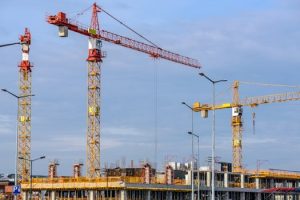Retail Space Reinvention: Pop-Ups and Experiential Leasing
Welcome to the new era of retail space reinvention – where traditional brick-and-mortar stores are no longer the only option for retailers. In recent years, there has been a shift towards more experiential and interactive retail spaces, in order to attract and engage consumers in a world where online shopping has taken over. One of the strategies that has gained popularity is the use of pop-up shops and experiential leasing. In this article, we will explore the concept of these innovative retail spaces and how they are changing the retail landscape.
The Rise of Pop-Ups in Retail
Pop-up shops, also known as temporary retail spaces, are short-term stores that can last anywhere from a few days to a few months. In the past, these types of shops were mainly associated with seasonal or holiday markets. However, in recent years, they have become a popular strategy for retailers to test new markets, sell exclusive products, or create buzz around their brand.
One of the main benefits of pop-ups is their flexibility. Retailers can rent a small space in a high-traffic area without committing to a long-term lease. This allows them to reach a new audience and test the waters without the financial risk of opening a permanent store.
Creating Experiences with Experiential Leasing
Experiential leasing takes pop-ups to the next level by creating immersive and interactive environments for customers. Rather than just showcasing products and making sales, experiential retail spaces offer a unique experience for visitors. This could include live demonstrations, workshops, or interactive installations that allow customers to engage with the brand in a more meaningful way.
The concept of experiential leasing is now being embraced by big-name retailers such as Nike, Sephora, and Nordstrom, who have all opened pop-up shops with a focus on creating experiences rather than just selling products.
Why Retailers are Turning to Pop-Ups and Experiential Leasing
With the rise of online shopping, many brick-and-mortar retailers have struggled to attract customers and drive sales. Pop-ups and experiential spaces offer a way for retailers to differentiate themselves from the competition and provide a unique shopping experience that cannot be replicated online.
Furthermore, with the rise of social media, these types of retail spaces have the potential to generate buzz and create a viral marketing effect. Customers are more likely to share their experience on social media, which can increase brand visibility and reach new customers.
The Future of Retail Space
The growing popularity of pop-ups and experiential leasing has sparked a change in the traditional retail space model. Rather than just being a place to buy products, retail spaces are now becoming destinations for consumers. This means that the design and layout of these spaces are becoming increasingly important, with retailers investing more in creating unique and visually appealing environments.
In addition to this, as consumers continue to demand convenience and personalization, we may see retailers incorporating elements of pop-ups and experiential leasing into their permanent stores. This could include incorporating interactive elements, or regularly changing the layout of the store to keep customers engaged and interested.
In Conclusion
The rise of pop-ups and experiential leasing has brought excitement and innovation to the retail industry. The flexibility, creativity, and reach of these retail spaces make them a valuable tool for retailers in an ever-changing market. As we continue to see the evolution of retail space, it is clear that the future lies in creating unique experiences for customers rather than just selling products.









